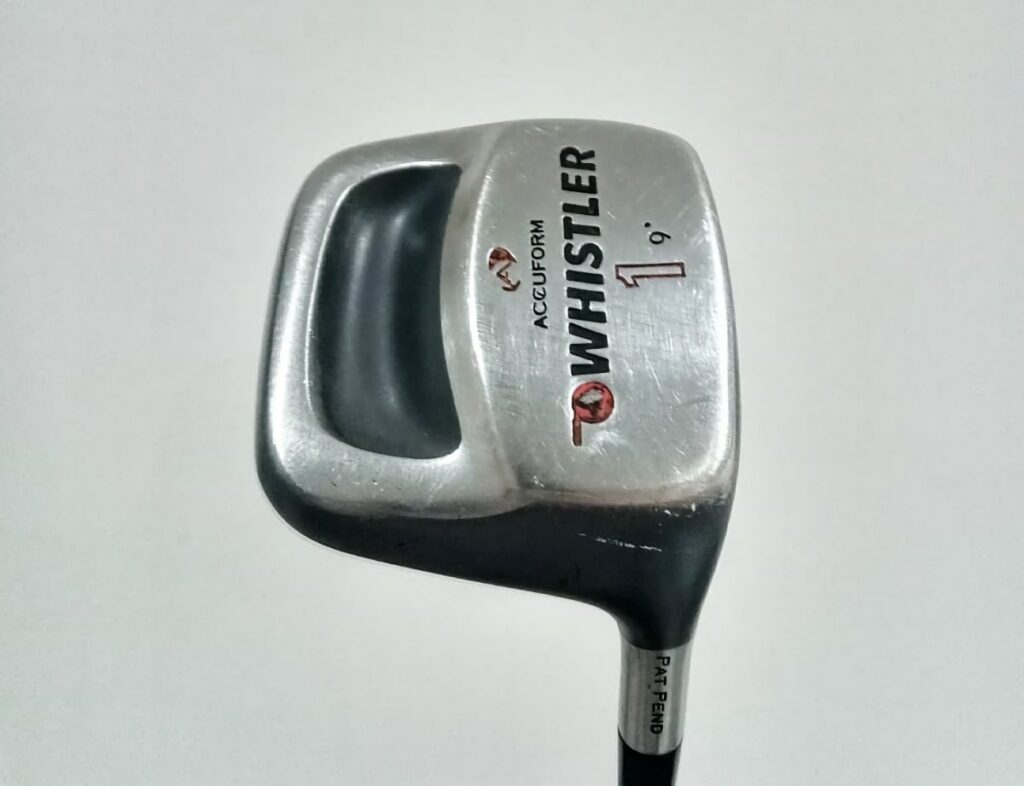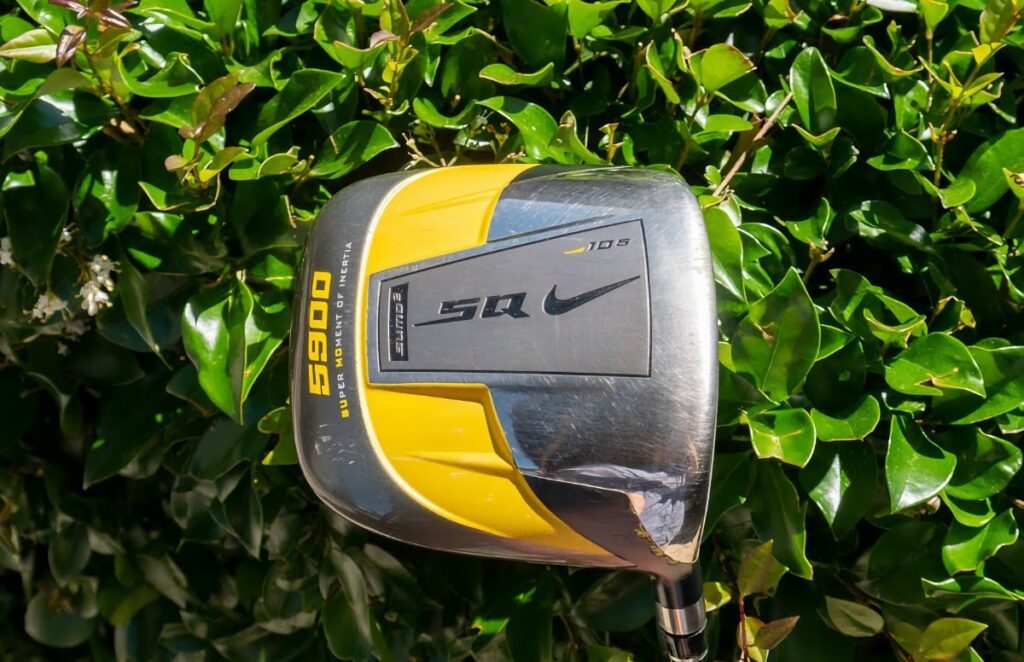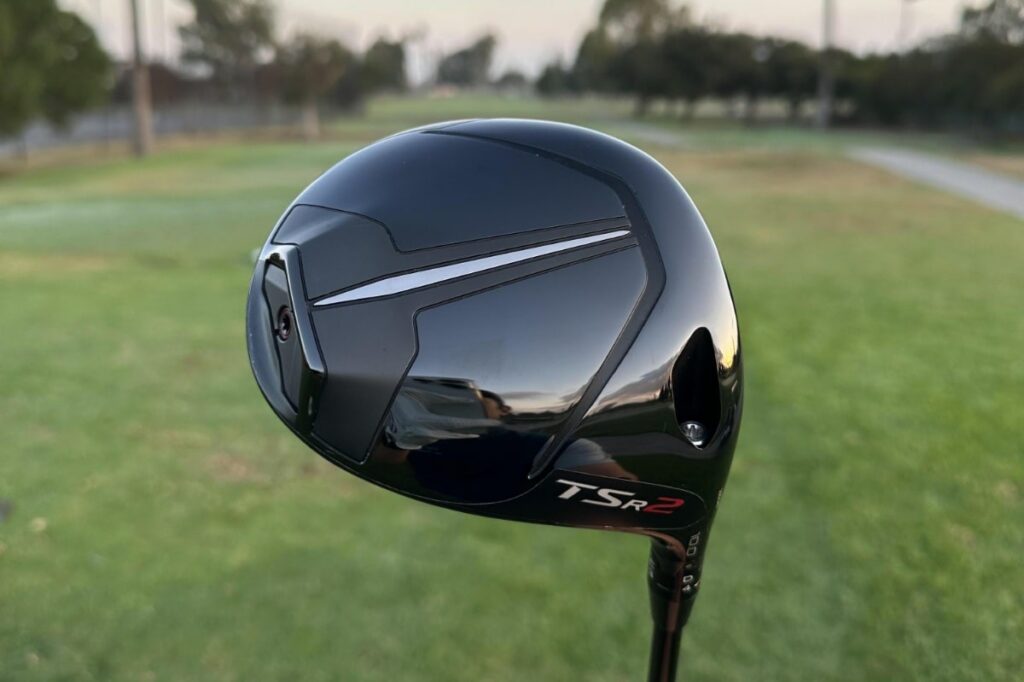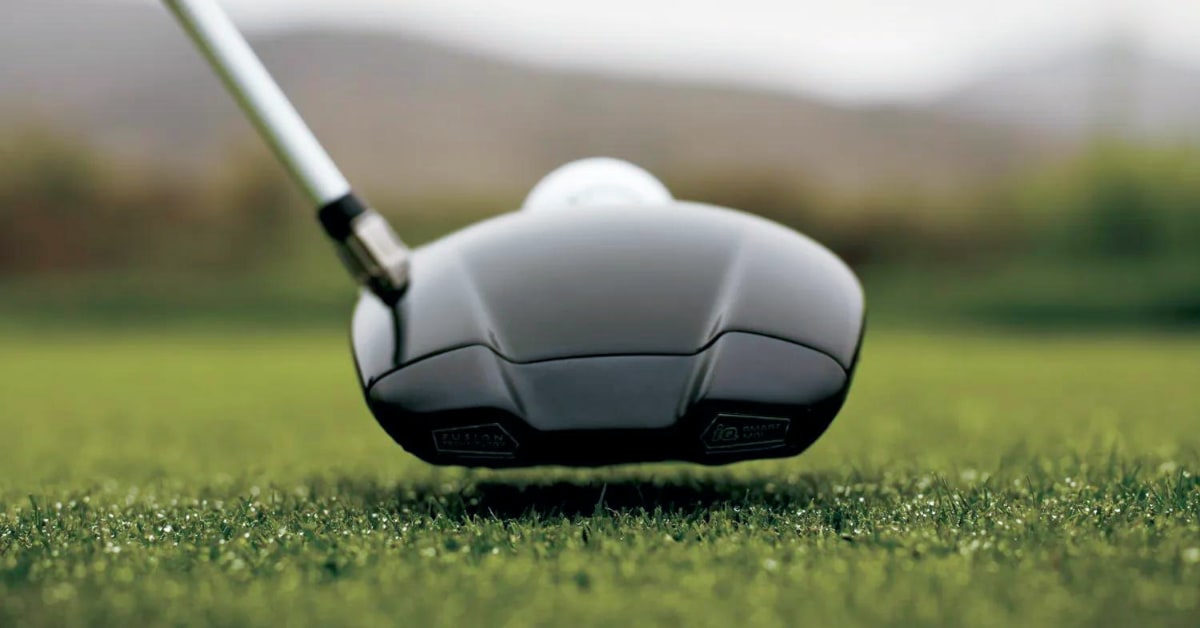The Nike Sasquatch Sumo 2 made waves in 2007 when its square-headed, super moment of inertia (MOI) design hit our shelves.
Although popular, it wasn’t the first of its kind. In this post, I reveal the story behind the square golf driver and my experience with the big stick.
I’ll cover the key details about the square driver and what made it so different. I’ll also explain why they’re no longer favored, despite the unique design.
Ready? Let’s crack on.
The History of the Square Golf Driver
Plans for a square golf driver were afoot in the mid-1990s.
Accuform Golf hired David Huber, who had crafted a rough drawing of the new club head design, before passing it on to Tom Sites from Impact Golf Technologies.
Huber was brought in by the new owners of Accuform to grow the brand’s product offering and sales. It prompted him to design groundbreaking products like a forgiving, square driver called the Whistler. Tom Sites produced an impressive club that offered consistency and accuracy off the tee for beginners.
The downside was a tight marketing budget which limited the reach and sales potential of the Accuform Whistler. It never took off, and the world would have to wait over 10 years to try a mass-produced square design.

Why Square?
The predominant reason for a square golf driver design was to enhance the twist resistance and stability of the driver in the swing.
Its chunky head design minimized twisting during the swing to help you square the clubface at impact, resulting in a straighter ball flight.
Huber and Sites realized that a square driver head would enable the engineers to boost perimeter weighting. The outcome was a wider sweet spot which prevented ball speed loss on mishits while containing spin rates.
The construction of a square driver head gave more room for engineers to push the center of gravity (CG) low and deep. The increased MOI and CG combination resulted in consistent ball speed, launch, and accuracy.
The Nike SQ Sumo Driver
Around a decade later, Nike launched their infamous square driver in 2006. Named the SQ Sumo, it featured a square head shape with bold yellow accents.

I had a love-hate relationship with the Nike SQ Sumo 2. I couldn’t resist it for its outstanding leniency, consistent ball speed, and high launch. However, I despised its gigantic head, lack of workability, square shape, acoustics, and loss of distance.
I generated consistent length off the tee, but it was 20 to 25 yards off my average with my TaylorMade R5 Dual driver at the time. That hurt me during my years of competitive golf because 25 yards less on a par 5 often left me in a position where I had to lay up, losing out on a potential eagle putt and tap-in birdie.
I had little time for the ‘tinny” sound reverberating across the golf course every time I struck a square golf driver. I say tinny because it reminded me of the sound a tin can makes when it lands on concrete.
Evolution and Current Trends
New square drivers are hard to come by as the world has shifted towards triangle-shaped drivers. These designs carry a lower CG and a medium to large footprint to induce an easy-launching tee shot.
The Srixon ZX5 is one of my favorite examples of a triangular driver, owing to its affordability, club head speed, feel, and acoustics.
Conversely, the Titleist TSR4 is slightly pear-shaped and produces a medium launch, low spin, and enhanced workability from the tee box.

The Best Square Golf Drivers
While there aren’t any new releases in the square golf driver department, you can still pick up some classics on the second-hand market.
Here are our two favorite picks: the Nike SQ Sumo and the Callaway FT-iQ.
PROS
+ Promotes straighter shots
+ Minimizes slice damage
+ Enlarged sweet spot
+ High launch angle
CONS
– Bad acoustics
– Off-putting design
Sumo stands for Super Moment of Inertia (MOI), prompting the Nike SQ Sumo to resist twisting during the swing. The famed big stick popularized square drivers and was designed by the legendary Tom Sites. Its forgiving nature sent mid and high handicappers rushing to swing them.
In my experience, the high MOI helped me square the clubface at contact, minimizing slices and encouraging straighter flight. The MOI received assistance from the Nike PowerBow Weighting club technology that stabilized the clubface, preserving ball speed and preventing a spin surge.
I noticed the Sumo Geometry combined well with the MOI, widening the sweet spot for consistent rebound off the face. Although I welcomed the launch and accuracy consistency, I felt uncomfortable with the square head at address, and the design played tricks on my mind.
I produced an unflattering smash factor with this driver and lost close to 25 yards on my TaylorMade R5 Dual. Like most square drivers, I wasn’t a fan of the sound or the heavy feel off the clubface.
PROS
+ Fast clubhead technology
+ Mitigates slices
+ Encourages straight ball flight
+ High launch angle
CONS
– Not the longest driver
– Ugly design!
Callaway launched the FT-iQ a year after the SQ Sumo.
The manufacturer claimed the design was inspired by the Lamborghini Reventon and the F-22 Raptor Stealth Fighter. While it may be so, I didn’t find it as attractive as the machines that inspired its creation.
I thought the driver was hideous at address, which like the Nike SQ Sumo put me off. It looked and felt strange, and I struggled to consistently strike the ball as a result of my mental bias.
I’m glad I wasn’t the only one, as Rick Shiels shares a similar sentiment:
Despite my inconsistent ball striking, I found myself conjuring up sufficient pace to get the ball airborne. Unfortunately, I lost close to 30 yards on my go-to driver at the time. However, the Hyperbolic Face Technology improved the driver performance, restricting ball speed drop-off and spin increase.
The FT-iQ features outstanding MOI, akin to the SQ Sumo. I found it easier to square my clubface at contact and hit the ball straighter. It has far more game improvement features compared to the SQ Sumo, which will suit beginners trying to get airborne and onto the fairway.
Read More: Callaway Drivers By Year



